Ford Falcon EA-ED 1988-1994
























.jpg)
.jpg)
.jpg)
.jpg)
.jpg)
.jpg)























|

|

|

|

|

|

|

|

|

|

|

|
.jpg)
|
.jpg)
|
.jpg)
|

|

|

|

|

|

|

|

|

|

|

|
With new style and fresh tech, Ford’s EA Falcon bridged the badge’s ‘big car for a big country’ lineage from the 1980s to the ’90s. Here’s how the EA-ED Falcons fly today
The TV ads showed a sedan rising into view; floating to the surface of a lake. The crooning TV voice-over spoke of "a bubble rising and bursting to reality"… as two more cars joined the first, driving arcs across the surface of the lake; walking on water under the tagline of ‘Simply Stunning’. Yeah, it was cool TV advertising from the rad days of 1988 announcing Ford Australia’s all-new EA Falcon.
This, the fifth generation Falcon, was a big step forward. Ford boasted of it being ‘a triumph of design and styling’ and there’s little argument. The almost all-new body – only a few out-of-sight underbody bits were retained from the previous Falcon – lost the hard edges and chintzy clip-on metal window trims of the XD-XF cars, adopting the smooth and rounded forms, wrap-over door frames, flush glass and steeply raked windscreen that had arrived in international car design during the 1980s.
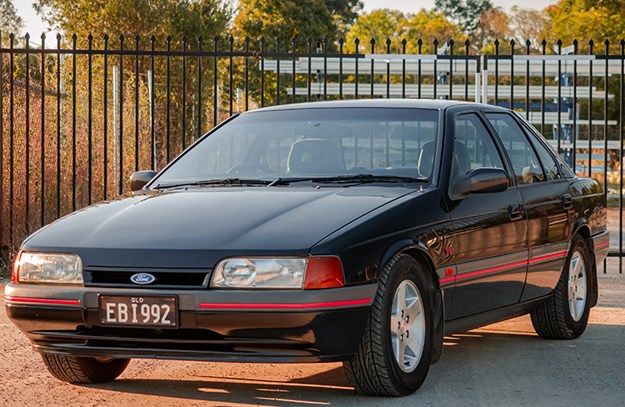
Ford was keen not to have a repeat of the situation of 1979 – when Holden’s new Commodore beat the XD Falcon to showrooms – so the February 1988 EA Falcon’s launch was earlier than ideal for its quality
Under that style, there was plenty of fresh tech. The front suspension was redesigned, including rack and pinion steering. The six-cylinder engines were now exclusively fuel-injected mills with new overhead cam (OHC) layouts in two capacities and with three power levels.
They’re not cluttering our roads as tatty taxis any more so these EA, EB and ED Falcons from 1988 to ’94 can be admired, collected, respected and cherished as terrific Aussie classics.
| Read next: 30 years of Falcon EA
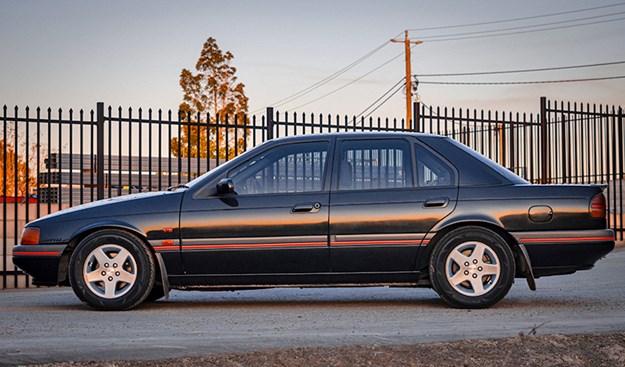
MODELS AND EQUIPMENT
The EA Falcon arrived in familiar GL, S, Fairmont and Fairmont Ghia variants with all being available as a sedan and wagon. Falcon wagons accounted for around 30 per cent of Falcon sales so a top-spec Fairmont Ghia wagon had appeal for rich dads.
For the EA, Ford redesigned its in-line six-cylinder engines to an OHC design (alloy head; cast iron block) and reduced the capacity a little. Engine choices were tied to models; the base GL had a 3.2-litre engine with throttle body injection (in the books as Central Fuel Injection; CFI) for 90kW. The bigger 3.9-litre CFI engine delivered 120kW and was standard on Fairmont, S and a GL option. The Ghia (and an available option on S) had a 3.9-litre with proper multi-point fuel injection on an individual-runner intake manifold for 139kW.
All manual EA Falcons were now five-speed; there was a three-speed auto, too, both by Borg Warner as was the rear axle. The front suspension was new and adopted rack and pinion steering with power assistance on all models – a first for Falcon. Referred to as SLALS (short/long arm, long spindle) the new front end geometry spaced apart the ball joints and loaded the spring more directly for sharpness and stability, promising handling beyond the previous 1960s tech.
| Read next: 1990 Brock Ford EA Falcon
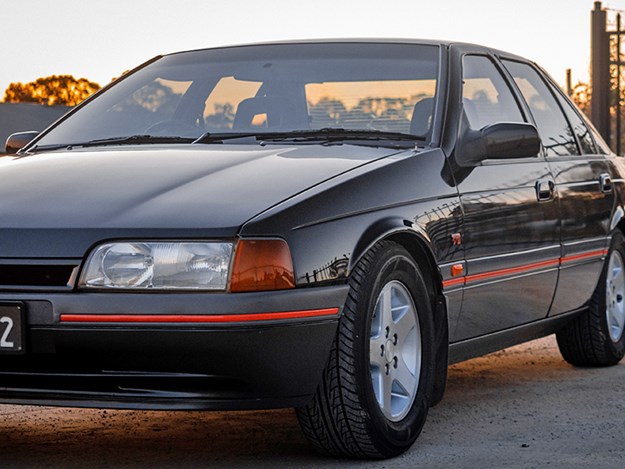
Not quite concealed like 1973’s Leyland P76 nor the VN Commodore, the EA sported semi-concealed wipers
The sedan’s rear suspension was the live axle, Watts link located coil spring system introduced under the XE series six years earlier. Although chastised by many pub experts, the wagon quite sensibly retained leaf springs (as it did right to the last-gen Falcon wagon in the 2000s BA-BF) for fuss-free load carrying and a wide, relatively low cargo floor.
All EAs had four-wheel discs; rear drums had been banished to the history books with the last update to the previous XF sedans/wagons. There were 14x5.5-inch steel wheels and hubcaps on the lesser cars and 15x7-inch alloys on the premium models.
Other fresh features for EA were the bolt-on engine/suspension front cross member, height and reach adjustable steering column and the Ghia’s set-and-forget electronic climate control.
| 2021 Market Review: Ford Falcon EA-EL
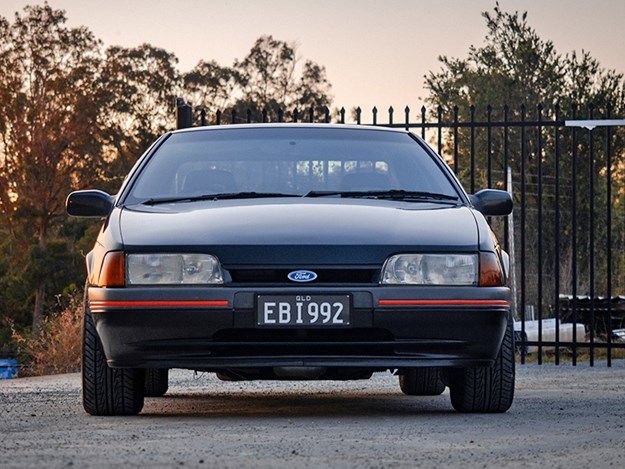
Unassuming V8 Henry
Of course the EA was the basis for Ford’s continuation of long-wheelbase Fairlane and LTD luxury sedans, too. But there were no new commercial variants.
Another no: There was no V8 Falcon… yet. But Ford responding to Holden’s freshly injected 5.0-litre V8 option (from 1989) in VN Commodore/Calais and announced the relaunch of a V8 in the EB series Falcon/Fairlane/LTD in 1991, ending almost a decade’s absence of a Ford V8 in showrooms.
The EB also included significant changes to the suspension tune to rid the car of its wallow and introduced new S-XR6 and S-XR8 models.
A much improved, 4.0-litre multipoint-injected six arrived in EBII. Not only did the new engine have 148kW at 4500rpm (vs 139kW at 4250) from the (renamed) GLi up but there were lots of little detail tweaks – such as new gasket designs – to reduce problems.
| Read next: Ford Falcon EA vs Holden Commodore VN
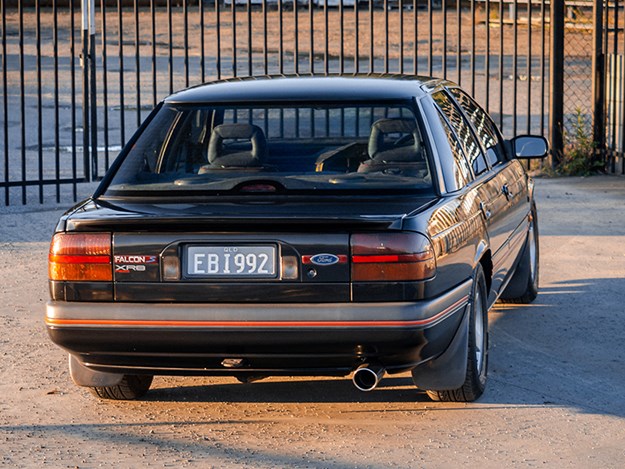
LIVING WITH A SIMPLY STUNNING FALCON
This generation continued the full-size stance that helped make Falcon’s Australia’s biggest selling model range since 1982 and few things match the big airy cabin and relaxed driveability of a good ’un.
But they weren’t – and aren’t – all good. Rumour is the EA was rushed into production to beat the 1988 VN Commodore into showrooms for a head-start on sales. The rumour is supported by some fact: the new Australian BTR four-speed automatic, developed to make the most of Ford’s revvy new OHC sixes, wasn’t yet available and the front suspension was initially set up with positive camber and low caster for manual steering – a povvo-pack feature deleted, but the car not re-jigged for – late in the EA’s development.
| Read next: 30 years of 5.0L Falcons
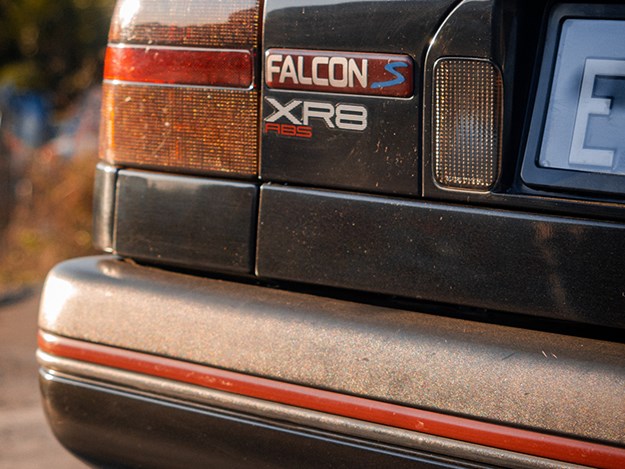
XD had plastic bumpers but the EA trasitioned to a full 'valance' type rear bumper in the style of the time the base/GL had unpainted bumpers, as did the VN Commodore
No matter what the real story is, the ‘stunning’ new Falcon soon gained a poor-quality reputation. But as with most older cars, three decades of fixes – and natural attrition – has rid the roads of the worst ones.
It was a sleek looker – a good thing in the face of fresh competition from Mitsubishi’s wide-body Magna and the forthcoming big new VN Holden Commodore. The big back seat and boot – or even cooler, a wagon – make the Falcon a terrific usable family classic. They have pretty good aircon, too.
At first, the old-school under-dash handbrake might make today’s little kids wonder what daddy is doing but it was there to accept the bench front seat option. It’s a minor drawback; Ford made up for it against the Commodore’s floor handbrake by offering tilt and reach adjustable steering.
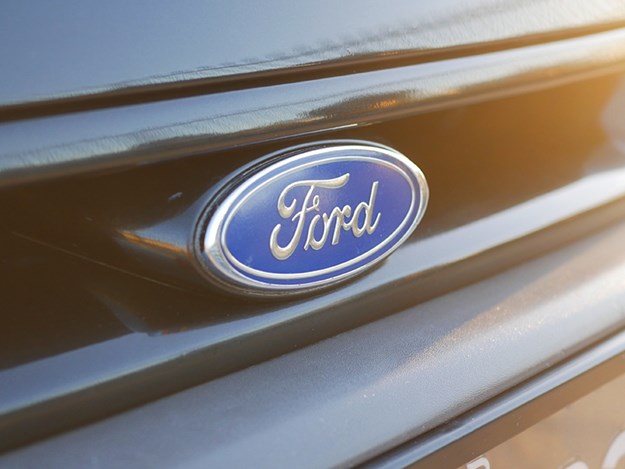
However, like most of the era, there was only rudimentary safety. An ABS/anti-lock brake system arrived for EB but there were no airbags. This gen was sold more than a decade before common fitment of traction and stability control, too.
Designed for and well regarded as a tow car (something like three-quarters of Falcons were fitted with a tow bar) a Falcon can easily tug a smaller race car or a retro pop-top caravan… that fact might help justify buying one!
Keep a few factors in mind and there’s nothing too scary about finding, owning or maintaining one of these Aussie icons.
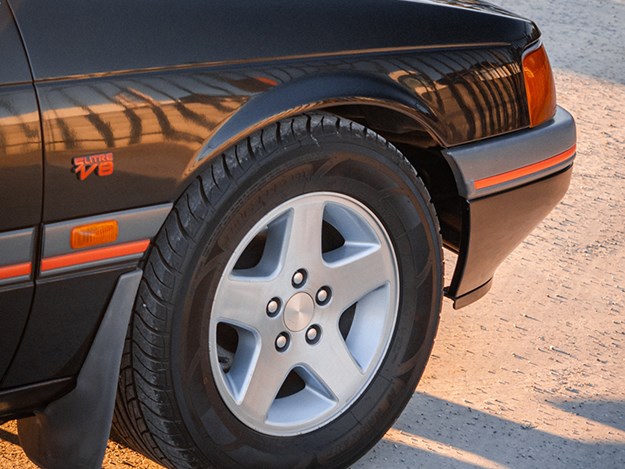
Ford’s iconic 15-inch ‘snowflake’ alloy wheel style from the XE and XF Fairmont Ghia was carried over to the S. The new Fairmont Ghia models had a fresh flush-faced alloy
WHAT TO LOOK OUT FOR
Under that good-looking exterior, Ford didn’t quite get the EA’s specs right; in particular, the original wallowy suspension and the three-speed auto didn’t live up to the ‘stunning’ promise the way Ford intended. But squishy handling aside, it was build/quality problems (such as head gaskets/cooling systems and loose steering column adjusters) that created an army of pissed-off customers and cost Ford lots in warranty.
Ford worked hard to continually improve the Falcon’s quality in the face of criticism and competition. But unless you’ve stumbled on an immaculate EA Fairmont Ghia or S, to fairly appreciate this generation of Falcon it’s better to ignore the EA and count along the alphabet a bit.
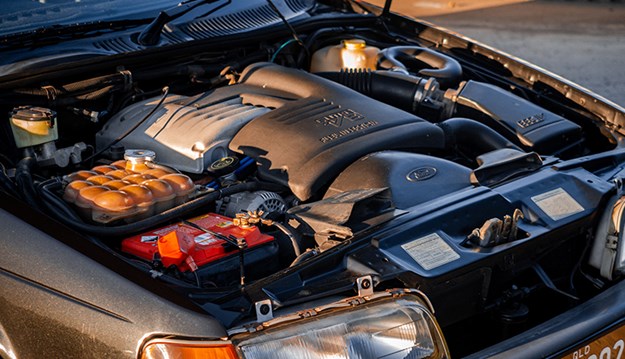
An optional 5.0-litre V8, had much better-calibrated suspension and steering, a revamp of the Ghia to be a better sports/luxury package, plus two new models, the S-XR6 and S-XR8 arrived with the EB in 1991, as did generally better build quality. These factors make EB arguably a much better starting point for a fuss-free cruiser/collector car today. The EBII’s updated and uprated 148kW 4.0-litre six makes things even better.
These days it’s rust that’s killing many of these Falcons. Boot lids rust along the lower edge – a Falcon trait from EA to the last FG – as do rear wheel arch lips and the dogleg adjacent to the rear doors’ lower corners, especially on wagons. But it’s the sill and A-pillar rust that is the real worry. Rust in either of these two locations – and many cars have it in both due to sound-proofing foam filling – is often not worth fixing due to the complexity of the repair. These cars aren’t stacked up at suburban wrecking yards any more so parts and panel replacement is becoming more difficult and expensive.
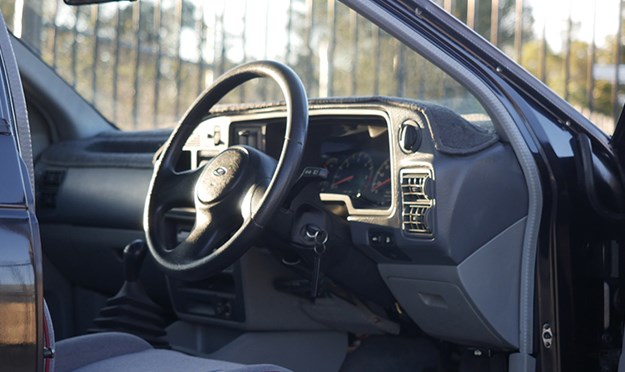
The E-Series had a light airy interior with acres of space. Velour trim was the rage for upspec models in the ’80s
Like other cars of the era, sketchy old electrics/electronics can be a problem too. A dead distributor module or crappy fuel pump (or its earth/wiring) will make the car stop and the EA/EB’s centre-fire throttle body can be troublesome. Thankfully, there are specialists (such as Injectronics) who can repair and provide parts.
The metal bits of engines, drivelines and suspension systems are simple and solid with good parts support. However, the chain-drive overhead cam engine can’t cop quite the same abuse from missed oil changes as the older Falcon engines. Most abused examples are now tin cans but listen for a quiet, tick-free idle.
Replacement lash adjusters are available. With an alloy head, the condition of the coolant is important. As with any engine, visible fumes emitted with the oil filler cap removed indicates the engine is getting tired; uneven cranking with the ignition disabled is a simple way of determining one or two worn cylinders.
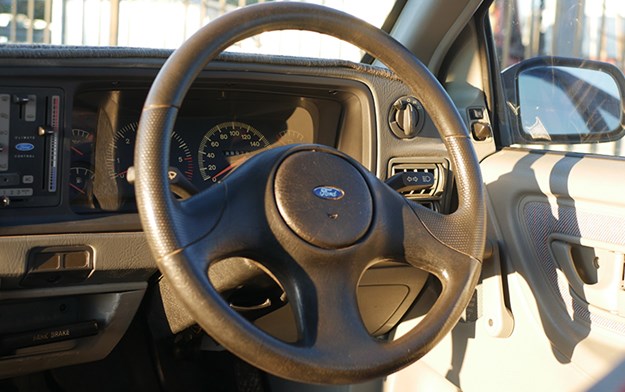
Wear/age in rubber parts – such as engine mounts and suspension – is easily and inexpensively fixed. Replacements can transform the feel and suppleness of a rough-feeling car.
Even with a one-owner full-books pop-spec car, keep a grand or two in the bank for some remedial work such as a head gasket, bushes or a trans service.

THE WRAP-UP
These E-series Falcons don’t quite have the same passionate following as Holden’s 1990s models – that’s probably due to the poisoned passion of Falcon’s lack of a V8 engine during the 1980s – but popularity and prices are on the rise. The really special ones (GT and Sprint) are already tucked away in collectors’ garages but grab a good Ghia, S or XR series (especially an EBII or later manual) and enjoy a staunch Aussie legend that is just as capable of caravanning across the continent as cruising to the local cars ’n coffee.
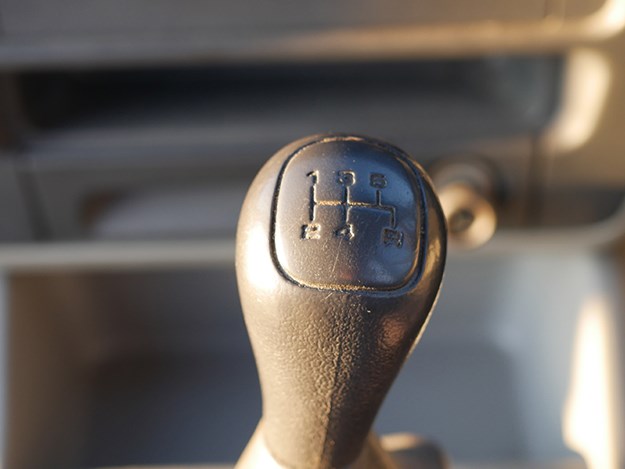
BUSTED!
"Official: ALL New Falcon!", screamed the cover of WHEELS Magazine in June 1985. Those words accompanied a pic of an aero-styled sedan, seemingly beamed back from
the future. The pic had been published in a US industry journal that WHEELS staffer of the time (was it editor Peter Robinson?) subscribed to.
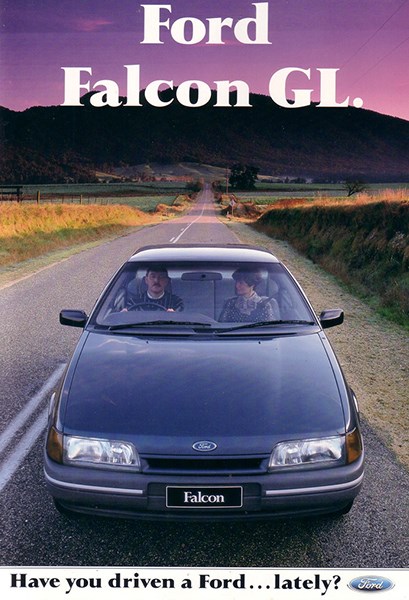
Bingo! Ford Australia’s next-gen Falcon was ‘scooped’ nearly three years prior to its 1988 launch.
RETURN OF THE V8
For A car-crazy kid - which is of course, what many of today’s Ford nuts were in the 1980s – 1982 was the beginning of a nightmare after Ford discontinued its 4.9 and 5.8-litre V8s. However the dream of a Ford V8 in the driveway began again in 1991 with the launch of the V8 option in the EB Falcon.
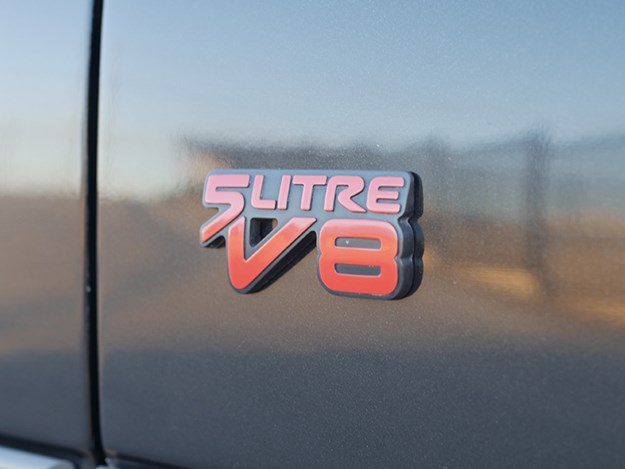
Shared with – and sourced from – USA’s Ford Mustang, the fuel-injected 5.0-litre claimed 165kW and 380Nm. Both figures were almost identical to the Holden VN V8 and it started a mighty performance war of Ford vs Holden, Falcon vs Commodore, Tickford (later Ford Performance Vehicles) vs HSV (Holden Special Vehicles) that lasted for more than 25 years.
I OWN ONE
We all know the expression; one person’s trash is another’s treasure. Well, nothing could be more fitting than the story of Don Birts’ 1992 EB XR8. Five years ago, Don heard a workmate had an EB XR8 for sale that he didn’t think anyone wanted, and if it didn’t sell by the weekend, it was off to the tip. Don, already owning a 65 Mustang, figured he might pick up the car for the gearbox and other spare parts as a worst-case scenario.
After sitting in the previous owner’s garage for eight years, the XR8 showed the usual signs of neglect, the clear coat was peeling, and there were a few minor rust spots, but other than that, it seemed to be in relatively good condition.
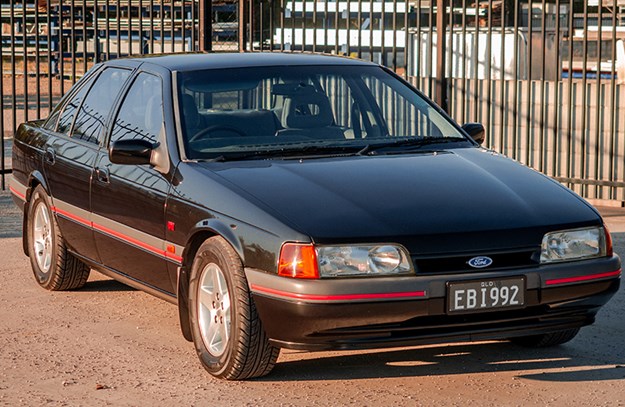
After driving the XR8 home, Don realised what a good car it was and scrapped any idea of using it for parts. Having raced Ford speedway cars for over 37 years and building his own engines, Don knows a thing or two about swinging spanners on blue oval beasts and decided to embark on a six-month restoration job that would typically take any regular person years.
Don decided to pull the whole car apart and did a complete rotisserie restoration in the home shed. While the body was on the rotisserie, Don got a little curious about how the roller cam set up on the XR8 five-litre donk worked and decided to pull the motor down and give it a full inspection. With no significant issues at all, the engine was treated to a refresh with new bearings and rings. Meanwhile the suspension and brakes received an overhaul with new pistons, pads, shocks, and a reconditioned power steering rack and pump.
The interior was in fantastic shape, and Don reckons it just took a little bit of elbow grease and a solid cleaning to get the interior to the immaculate conditions it’s in today.
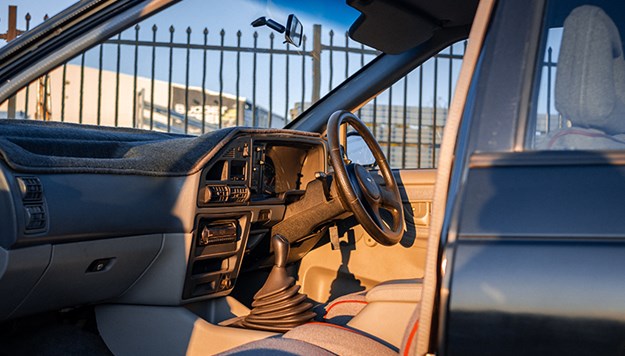
Manual gearboxes more common then
When asked what the most challenging part of the build was, Don reckons it was the electrics. His 65 Mustang has the same size 302 engine with one wire, but he laughed and said, "the XR8 has about 100 wires plus vacuum lines and sensors running all over the place." He was worried it might not even start after putting it back together.
Don’s XR8 has been pulled apart, refreshed, resprayed, and meticulously put back together with an attention to detail evident throughout. Running the factory five-litre motor, five-speed box, and three-inch exhaust Don says it’s a pleasure to drive, runs like new, and sounds great.
The car is currently for sale, see the ad here.
EA-ED FALCON YEAR BY YEAR
1988: The EA Falcon arrives in February. Models are GL, S, Fairmont and Fairmont Ghia sedans and wagons. GL has 3.2 and others have 3.9-litre engines in two power levels
1989: EA2 arrives in October. The big news (really, the only news) is Australian-developed BTR electronically controlled four-speed auto replaces the old three-speeder
1990: The ‘limited edition’ 30th Anniversary models arrive in October. It celebrates the original XK Falcon of 1960 and introduces new door locks. Yes.
1991: Tickford Vehicle Engineering was established as Ford’s performance partner a’la Holden Special Vehicles. The product planning role is filled by ‘Mr GTHO’, Howard Marsden
1991: The EB arrives in September. Big news is an optional EFI 5.0-litre V8. Smoother tail lights; Ford oval relocated to the grille. Plenty of suspension and steering improvements
1991: Two fresh models arrive with EB: S-XR6 and S-XR8. They’re the foundation of a continuous quarter-century of Aussie performance Falcons
1992: EBII arrives in May. Re-engineered 4.0-litre six with multi-point for 148kW is now the standard engine. ABS brakes available; it’s a three-channel Bendix system
1992: In September, Falcon S-XR6 gets its own Tickford-developed top-spec 4.0-litre engine with 161kW. Brilliant. It’s a V8 beater
1992: Falcon GT is relaunched. Based on Fairmont Ghia, the limited build Tickford-developed car has a special 200kW 5.0-litre V8 and suspension package over 17-inch Pirelli tyres
1993: ED series arrives in August. Renamed XR6 and XR8 get awesome four-light headlight style; others get rounded grille. Limited edition – and now iconic - XR8 Sprint has 192kW V8
From Unique Cars #471, Oct/Nov 2022
Unique Cars magazine Value Guides
Sell your car for free right here
Get your monthly fix of news, reviews and stories on the greatest cars and minds in the automotive world.
Subscribe

.jpg)











.jpg)

